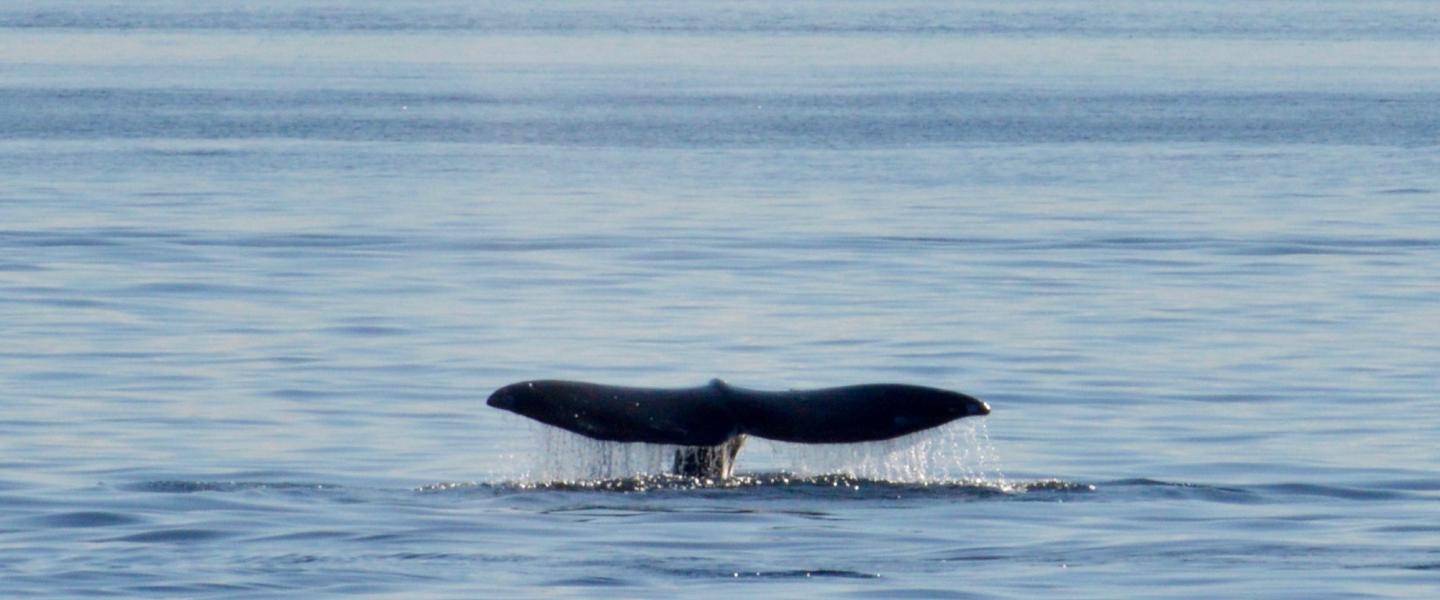
About 2.5 hours in to hour 3-hour tour this afternoon, Captain Gabe, and I, along with the 22 guests on board, began to make our way back toward Roche Harbor. We had already encountered a ton of wildlife. This included a few species of birds foraging over a bait ball (pictured). We observed flying bald eagles, roosting cormorants, harbor porpoise, harbor seal, and even the (non-native) mouflon sheep of Speiden Island.

A gray whale, a very rare visitor to the Salish Sea, breaths at the surface, forming the species' characteristic heart-shaped plume.
Suddenly, a captain from another boat called over the radio to announce that he had just spotted a blow. A “blow” is the term we often use to describe the spout or plume of water vapor that results each time a large whale exhales at the surface. At first, the captain identified it as a humpback whale. Humpbacks, although still in low numbers here (25-40) individuals that remain in the Salish Sea for the summer, it is quite common for us to see them. Even though the location of the whale was about 30 minutes from our location at that time, our guests really wanted to see a large whale, and were gung ho for another 1.5 hours on the boat. So, we turned around and cruised toward the report.
Along the way, we were still in communication with the captain that was on scene. After a few more surfacings, he later changed his report from a humpback to a gray whale!! I don’t blame this captain at all for having assumed it was a humpback at first. Gray whales are very rare in the Salish Sea—I’ve been here for two seasons and have never seen one in the area. Although humpbacks and grays are similar in size, 45-52 feet and 49 feet on average, respectively, there are some noticeable differences.
The most obvious from the surface, will be the fact that gray whales don’t have an actual dorsal fin. Their dorsal ridge is adorned with small knob-like bumps, the first one being the largest. Their flukes are also much differently shaped than humpback flukes however, and not quite as wide (see below). Gray whale flukes are 10-12 feet wide, while humpbacks flukes are around 15 feet from tip to tip. Gray whales also tend to have a very mottled gray color with scars, barnacles, and whale lice covering certain parts of their body.
After watching is surface a few times, and fluke twice, we headed back to Roche Harbor to end what became a 4.5 hour tour. Still, quite and exciting sighting!
Naturalist Alex
M/V Sea Hawk


